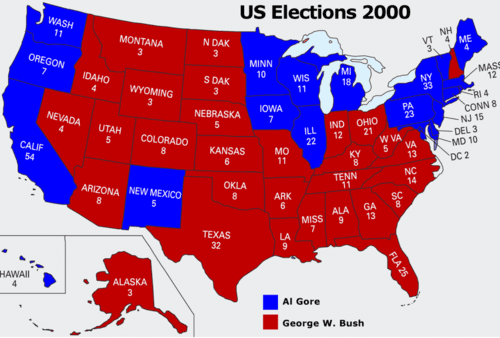Donald Trump enjoyed his biggest victory Tuesday in Massachusetts, where he won 49% of the vote, and his second biggest in Alabama with 43%.
Think about that for a moment.
Granted, primaries are a lot wilder than general elections, which have been extremely stereotyped by Red-Blue states ever since Ross Perot stopped running. The four Presidential elections in this century have been very consistent in terms of the states following similar rank orders from most Republican to most Democratic. For four elections in a row, the number of years the average white woman in 2002 could be expected to be married between 18 and 44 has proven a remarkably good predictor. My theory is that Red-Blue map of the states is related to what I call “Affordable Family Formation” states with cheaper housing relative to incomes encourage white people to get married and have kids, which makes the state likelier to vote for the Family Values party. Thus the Red (Republican) States tend to be the cheaper inland regions while the Democrats (Blue) due best where deep water limits metropolitan expansion and thus the price of real estate is higher.
One reason my 2004 discovery proved so enduring is because the GOP ran in 2012 Mitt Romney, a man with one marriage and 23 grandchildren.
Trump’s appeal to Republicans, as of 12/31/15
But maybe that’s going to finally change. It’s not just Trump’s colorful family life, but that his appeal seems to tap into a different regional pattern. What Ross Douthat calls the “Trump Belt” appears to run from, say, Louisiana to New Hampshire. Granted, Trump did well in Nevada, but he’s a casino owner, so his appeal there is not inexplicable. (He lost to Cruz in the Mormon districts along the Utah border.)If there is a Trump Belt, I don’t yet understand its causes.
Is it personal affect? As a laidback Southern Californian, Trump reminds me of the late George Steinbrenner, the extremely obstreperous owner of the New York Yankees, whom my Los Angeles Dodgers battled in the 1977, 1978, and 1981 World Series.
At that time, the Dodgers embodied the postwar corporate ethic of not airing your dirty laundry in public. The Dodger players were made to mouth to the press the boring cliches that Kevin Costner teaches Tim Robbins in Bull Durham: “We gotta play it one day at a time” and the like. Occasionally, something so lurid would happen behind closed doors, such as the 1978 locker room fistfight between Steve Garvey and Don Sutton over Sutton gossiping about Mrs. Garvey sleeping with Marvin “The Way We Were” Hamlisch, that it would leak out to the public, but that was considered bad form.
In contrast, Steinbrenner was constantly feuding in the tabloids with his own manager Billy Martin (whom he fired five times) and his stars Reggie Jackson and Thurman Munson. To Angelenos used to the O’Malley’s buttoned down operation, Steinbrenner’s verbal violence was unseemly. But that was a long time ago. So I don’t know how California will vote in June.
Still, there’s something to be said for shaking up the regional divisions of the country that have become calcified. A few individuals, such as Michael Hart, have been suggesting a division of the United States along the Red-Blue lines into separate countries so we stop getting on each other’s nerves so much.
Personally, I’m a Union man in the tradition of Jackson, Lincoln, and Grant, so I don’t much like that idea. But it would be nice for the long term stability of the United States to have some other regional dimension to organize the country’s enthusiasms and resentments around besides the Affordable Family Formation split of recent decades.














